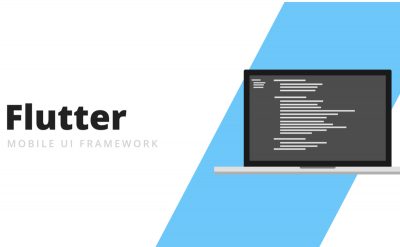Identity and Access Management (IAM) is web services that assist the enterprises to securely manage and control the access to applications, services, and data. IAM is the security and access layer that defines the features of data and application depending on the hierarchy of the resources. Enterprises are using the IAM to provide authentication for sign-in and authorize the permission to use the resources. Identity and Access Management (IAM) is at the front line of the security, yet many of the enterprises need to be aware that the IAM projects cannot actually live up to the required expectations. Too many of the IAM take long duration and cost too much to be completed. IAM provides some of the most immersive features such as controlling access, managing and securing the privileged accounts and implementing the policies. Many of the enterprises need to scrutinize the applications to implement security solutions. For many of the enterprises, the IAM becomes a security liability crippling the access policies with several bugs and gaping holes in the security infrastructure. IAM should be self-sustaining security infrastructure that can assist the IT admins to protect the infrastructure from criminals. Before you start building the Identity Access Management (IAM) solution following are the required functions that need to be added in the solution:
1. Setting-up user access to the application, data, and
2. Ensuring that the access given to that user is the access or privilege that the user is supposed to have.
3. Providing the required oversight or governance to ensure that the enterprise’s admins will be able to access and agree whether that’s appropriate.
Building three functionalities that would actually be driving the Identity Access Management (IAM) development:
1. Access Management
Access management or the things the enterprises do to set up and maintain user access. This is one of the most imperative areas wherein the enterprises actually need to focus towards, to maintain the IAM functions such as- Sign-on, provisioning and password management. All the other privileges of the IAM are developed on the concept of access management. The struggle for users is imperative for the appropriate users to give access, whether it’s for the data, software or application. Many of the IAM projects actually fail at the basic functionality of the access management making the access situation dicey failing the project.
2. Privilege Management
Privileged management or super users can manage many of the access controls, but it would depend on the hierarchy of the resource provisions. Privileged access or super users can actually create loads of problem for the enterprises and dealing with individuals can lead to question such as. The unlimited access capability can lead to individual accountability for the user’s account. Should the accountable power be limited to a single person or group?
Most of the major data breaches have taken place either due to the compromised accounts. One of the reasons why usually enterprises fall prey to cyber tricks is no quarterly security audits to look for security gaps.
3. Policies
Policies will be imperative that will determine the foundational elements that need to be included in the access management and also when the privileged access is actually defied. It will be implementing the required security guidelines and compliance situations to help the enterprises to prepare for daily functions and also the worst case scenario. The policies can be generally implemented to adopt the attestation or re-certifications that are in-line with the different types of business solutions. Identity governance will help to implement the required access that is granted to each user with appropriate guidelines in place for the security and compliance of the infrastructure. Policies need should be updated and prioritized periodically to provide access rights to the users and also assist them in understanding the privileges. Most of the enterprises might be following the above the strategy but they still don’t really end with an IAM solution that can assist them in developing the required infrastructure.
Here are some of the situations due to which the required IAM project fails to satisfy the questions:
1. Multiple Solutions
Multiple solution providers catering to different functional requirements to satisfy multiple touch points of the infrastructure. If an enterprise applies multiple solutions to satisfy functional requirements such as:
i. Manual process for provisioning active directory with native tools.
ii. Customized framework for the enterprises to maintain the data.
iii. A third part provider solutions for authentication and management of security.
This all creates more complex solutions for the enterprises, with multiple fit solutions and with no defined policies to actually maintain the infrastructure.
2. Single and Multiple Solutions
Enterprises that have specific requirements rather than investing in the internal infrastructure they adopt the third party application to improve the total process. Then after some years, the enterprises realize that the requirements have changed and new points need to be added. Still, the major part of the IAM is still performed manually rather than improving the access process now it increases the complexity.
How to develop the right IAM solutions to solve the above problems:
1. Single Solutions Covering the Reach
More identities have different types that can invariably affect the total infrastructure setup. Many of the current enterprises go in for the customization solutions that can exponentially develop many gaps in the solutions. Make sure the total provisioning, re-provisioning, and de-provisioning are done constantly to improve the user experience.
2. Automate and Manual
If the manual processes indicate an unsuccessful IAM as they might get affected by the situations. Find the places where the automation can save time and money for the enterprises. Automation can reduce the error ratios for the given tasks are performed. The prime targets of the automation include different groups such as user and group management.
3. Innovation
IAM project is not a static kind of technology platform that can support all the variations. The compliance and access controls need to be unified with a different situational target that can benefit the development. IAM solutions will fit right in the application management solutions that you require but will it be a complete part of it or just an optional feature will depend on the enterprise’s requirements.
Conclusion
Whether adopting the third party solution or developing in-house, the need for comprehensive solutions for all the applications and data management is felt by the enterprises. The tedious manual tasks induce errors that cramp the system, an IAM will be the solution for the requirements preventing the security lapses.
To know more about Application Management Solutions, you can download our whitepapers.














